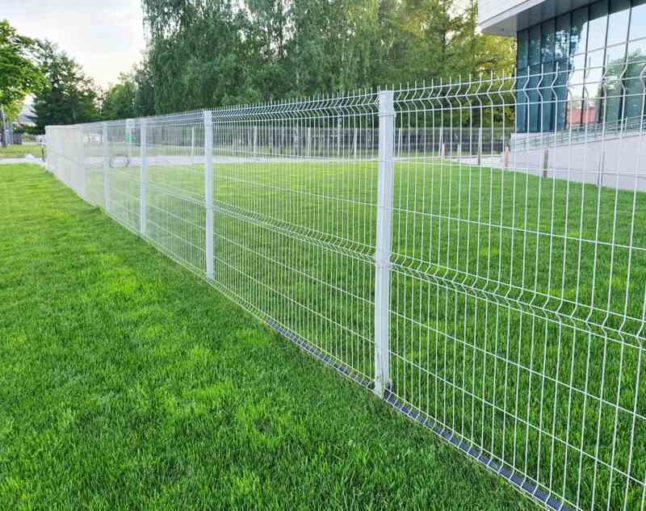All Categories
Featured

When thinking about mounting a fence on your building, one of the most essential steps is to understand whether you require a permit. Fence installments usually need a license to make sure that the framework abides with neighborhood zoning laws, developing codes, and safety requirements. The particular permits needed can differ depending upon your area, the sort of fencing you prepare to set up, and the height or positioning of the fence. Here's a guide to help you navigate the process of obtaining a fence permit and ensure that your installment is lawful and easy.
Why You Need a License for a Fence Installment. A fencing permit is required to make certain that the installation fulfills regional regulations. The authorization procedure aids neighborhood authorities verify that your fence does not interfere with website traffic presence, respect your residential or commercial property lines, or violate height constraints. It likewise makes certain the safety of the framework, so it doesn't posture a danger to you, your next-door neighbors, or the public. Installing a fencing without a license can lead to fines, elimination of the fencing, or delays in building, so it's vital to examine whether an authorization is needed before beginning your task.
Kinds of Licenses You May Need. There are a couple of common kinds of licenses you may need for a fence installation:
Structure Authorization. A building permit is the most typical license required for fence installations. This license makes certain that the fence satisfies safety criteria and is created according to regional building codes. A building license is typically needed if the fence exceeds a particular elevation (often 6 feet), is constructed from certain products, or is located near a public pathway or road.
Zoning Authorization. A zoning license might be required to confirm that your fence abides with neighborhood zoning legislations. Zoning regulations can determine where a fencing can be put on your building, exactly how high it can be, and whether it is enabled in specific locations (such as along residential or commercial property lines or in front backyards) Some districts have laws restricting the height of fences in the front yard to make certain presence for pedestrians and vehicle drivers.

Problem License. If you are developing a fencing near your residential property line or near a road, you may require a problem permit. A setback refers to the distance a framework, including fences, should be from the home line. Trouble laws vary by area, and making sure that your fencing is placed correctly can protect against problems with next-door neighbors and prevent infractions.
House Owner Association (HOA) Approval. If you reside in an area controlled by a House owner's Association (HOA), you might need authorization from them in addition to neighborhood permits. HOA guidelines often cover the sort of products, height, design, and color of fencings. Even if your city government does not need an authorization, your HOA may still have details standards that require to be followed.
Exactly How to Obtain a Fencing License. To request a fencing authorization, you'll need to contact your neighborhood structure department or planning workplace. The application procedure generally entails submitting a form, paying a charge, and submitting a site strategy of your property that reveals the proposed area of the fence. You may also need to include details concerning the materials, height, and style of the fencing.
In some instances, a regional authorities may require to evaluate your residential or commercial property prior to accepting the authorization. Once the permit is approved, you will be licensed to proceed with your fencing installation.
When Is a License Not Required? In certain scenarios, a license may not be needed. These scenarios can consist of:
Low Height Fences: In lots of areas, fences that are listed below a specific height (commonly 3 to 4 feet) may not need a permit, especially if they are put in the backyard or various other non-visible areas.
Fence Replacement: If you're changing an existing fence with the same elevation and product, some locations might not require a brand-new permit.
Non-Obtrusive Fencings: Attractive or temporary fences, such as those made use of for gardening or landscape design purposes, may not call for licenses as long as they are low and not permanent.
However, it is very important to examine with your regional zoning office or structure division, as laws can differ by territory.
Consequences of Not Obtaining a Permit. Falling short to obtain the necessary permits can bring about considerable consequences. These include fines, forced removal of the fencing, or perhaps hold-ups in construction. Furthermore, if your fence does not satisfy regional laws, you can face legal issues with neighbors or regional authorities.

Conclusion. By guaranteeing that you adhere to local laws and acquire the needed permits, you can stay clear of expensive blunders and guarantee that your fence is lawfully compliant. Examine with your local building division, HOA, and zoning office to establish what authorizations are required for your particular fence task.
Latest Posts
Why Regular Car Maintenance at Montclare Auto Repair Reduces Costs
Published May 22, 25
1 min read
Experience WyHy Federal Credit Union – Top Benefits for Your Financial Success
Published May 22, 25
1 min read
Discover Your Financial Partner at WyHy – Key Advantages for Your Financial Success
Published May 22, 25
1 min read
More
Latest Posts
Why Regular Car Maintenance at Montclare Auto Repair Reduces Costs
Published May 22, 25
1 min read
Experience WyHy Federal Credit Union – Top Benefits for Your Financial Success
Published May 22, 25
1 min read
Discover Your Financial Partner at WyHy – Key Advantages for Your Financial Success
Published May 22, 25
1 min read